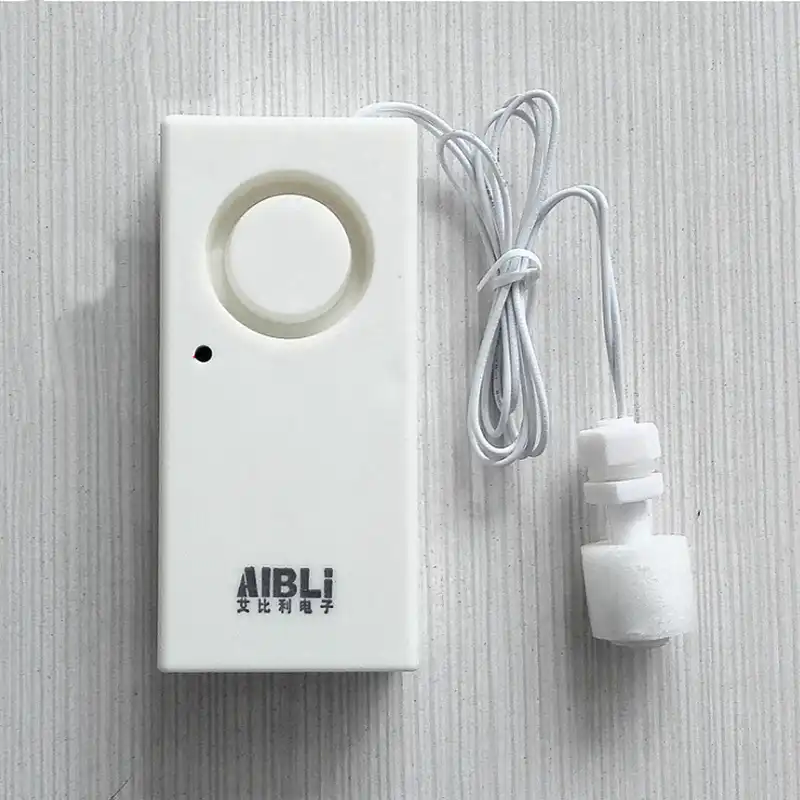Simple Battery Monitor
It is essential that the battery bank in a renewable energy system is well looked after. This means that the voltage of the battery bank must be known. It can be easily measured with a multimeter or a voltmeter, however a fun and inexpensive project is to make a very simple battery status monitor.
Works in all 12v lead-acid battery applications. Calculates the battery's state-of-charge in real-time. Broadcasts the battery's temperature, voltage and charge state 24/7 Car Battery Monitor with Patented Diagnostic Software which includes US Patent 8,386,199 which warns of pending starter battery failures. When battery voltage drops to a certain level set by 10k pot, this simple battery monitor circuit energizes a LED. For reading battery voltage in 1 V steps or even steps as small as 0.1 V, we can add any number of additional circuits.This circuit provides LED indication for easy use on modern cars, replacing the ammeter reading which is too complicated. A simple battery monitor app. No third-party sponsored apps. No popups and UI clutter. The interface shows battery status, battery statistics and usage graph. The interface uses system's date and time settings. The app features a live tile in all sizes. This battery status monitor could not be more basic – it just indicates when the batteries have 12.6 Volts or more. However it would be very simple to extend the monitor to include an over-charge warning indicator when the voltage reaches say 14 Volts, and a battery healthy indicator which is lit as long as the voltage is over say 11.8 volts.
In a typical 12V system the voltage of the battery bank can fluctuate from 10.6 Volts (below this the battery is very dead) when heavily depleted and under load, to as much as 15 Volts when being heavily charged. A healthy full 12V battery bank would usually have a voltage of around 12.6 Volts when not under a load and between 13-14 Volts when being charged correctly – i.e. not too quickly. Therefore it would be interesting to have an indication of the status of the battery bank using an LED to show if it is being charged.
For this example we will use the arbitrary figure of 12.6 Volts to indicate battery bank under charge however this could value could be set lower or higher according to your own needs and system configuration.

The Battery Status Monitor Introduction
The status monitor uses a Zener Diode, a Light Emitting Diode (LED), and a Resistor – components which can be bought for pennies each.

Each Zener Diode has a specified Zener voltage. If the voltage in the circuit is greater than the Zener voltage, then the voltage drop (ie. the voltage reading across the diode) is equal to this Zener voltage. However, if the voltage in the circuit is less than the Zener voltage then no current flows. Therefore, if you put a Zener diode in series with an LED in a circuit, the LED will light if the circuit voltage is greater than the Zener voltage plus the voltage drop across the LED.
Making the Battery Status Monitor
We want our LED to light when the voltage of the 12V battery bank is 12.6 Volts or higher to indicate the batteries are being charged by our renewable energy set-up. Let’s use the following components:
1 x 8.2 Volt Zener diode.
1 x standard green LED (Specfications: maximum current 30mA, voltage drop 2.5 V).

In order to make the LED last as long as possible we will not use the maximum current – instead we will aim for around 15mA.
The total voltage drop across the Zener diode and LED will be 8.2+2.5=10.7 Volts. A resistor is therefore required to prevent too much current getting to the LED and destroying it. The difference between the battery bank target voltage of 12.6 Volts, and the voltage dropped by the Zener and LED of 10.7 Volts is 1.9 Volts. These 1.9 Volts must be dropped across a suitable resisitor with a current of no more than 15mA – therefore using Ohm’s Law we find that resistance = 1.9 Volts / 0.015 Amps = 127 Ohms coincidently the exact value of a manufactured resistor. Normally you would select the resistor with the nearest value above the resistance value calculated with Ohm’s Law.
Therefore add to the parts list for this project:
1 x 127 Ohm Resisitor.
Choosing Correctly Power Rated Components
We now need to check the power dissipated in the Zener diode and resistor at different voltages so we can select suitably rated components, and check that the current flowing through the LED when the battery bank is at its maximum voltage is below the manufacturer recommended maximum.
If the battery bank were to hit 15.5 Volts the voltage drop across the Zener diode would remain fixed at 8.2 Volts and the drop across the LED at 2.5 Volts, therefore the voltage drop across the resistor would increase to 15.5-8.2-2.5=4.8 Volts. Again using Ohm’s Law we find that the current through the resistor (and therefore through the LED) will rise to 4.8 Volts / 127 Ohms = 38mA. This is a little over the manufacturer recommended maximum current however, if your 12 Volt battery bank is regularly at 15.5 Volts the expense of replacing your little LED a couple of years early will pale into insignificance compared to the cost of the damage to your battery bank!
At a current of 38mA the power dissipated by the Zener diode will be 8.2 Volts * 0.038 = 0.31 Watts, and the power dissipated in the resistor will be 4.8 Volts * 0.038 = 0.18 Watts. Therefore a 500mW rated 8.2V Zener diode and a 1/4 Watt 127 Ohm resistor will be perfect.
Putting the Battery Status Monitor Together
There is no need to worry about soldering this together – the legs of the LED, resistor, and Zener diode can simply be twisted together. The last item you will need is:
1 x Length of One Amp bell wire (split along its length into two pieces of wire).
.which is very cheap – or you can cannibalise any other single-core insulated wire you have lying around. With a maximum current of 40mA flowing through it the wire does not need to be thick, but it is best to always use insulated wire to prevent accidently short-circuiting the battery bank.
The short leg on the LED (pictured above) is the cathode and is connected with the wire to the negative terminal of the battery.
The cathode of the Zener diode (pictured above) is marked with a stripe (silver in this example), however Zener diodes are placed into circuits in reverse, so next connect the positive anode (long leg) of the LED to the positive (no stripe) end of the Zener diode.
Finally the cathode of the Zener diode is connected to one leg of the resistor, and the other leg of the resisitor connected to the positive terminal of the battery bank with wire.
The green LED of the completed simple battery bank status monitor will now remain lit as long as the battery bank voltage stays above 12.6 Volts.

Developing the Battery Status Monitor Further
This battery status monitor could not be more basic – it just indicates when the batteries have 12.6 Volts or more. However it would be very simple to extend the monitor to include an over-charge warning indicator when the voltage reaches say 14 Volts, and a battery healthy indicator which is lit as long as the voltage is over say 11.8 volts.
Simply recalculate the values of resistor and Zener diode required for each additional monitor and join each string of components in parallel to the battery to be monitored. The whole thing can be soldered together and built into a suitable box with the LEDs labelled so that everything looks tidy and you have a project to be proud of!
Buying Zener Diodes
Simple Battery Monitor Circuit Diagram
Mixed packs of Zener diodes are available in the REUK Shop.
Simple Rv Battery Monitor
No divider resistors needed! No switches needed! No calculations needed!”
– Simple, high-accuracy battery monitoring! “Supply voltage divided output” –

A product that runs on battery power needs a battery monitor function to keep track of how much power is left. This is normally done using a divider resistor that divides the power voltage and inputs it to a microcontroller ADC. A divider resistor is used to divide the power voltage to prevent the monitored battery voltage from exceeding the withstand voltage of the microcontroller that is used. To conserve battery power, the current flowing through the divider resistor is controlled by a transistor. (The red portion in the figure below)
As more parts are added to implement the required functions, the selection of parts becomes more complex.
In calculating the resistance of the divider resistor, it is necessary to consider the internal impedance of the connected ADC. If this impedance is omitted when determining the resistance, the required voltage will not be input to the ADC making it impossible to properly monitor the battery. The transistor ON resistance that functions as a switch may also impact output accuracy depending on the resistance value.
An increase in the number of components may also make it necessary to increase the size of the mounted board. An IC with a supply voltage divided output can be used to solve the above problems of “complexity in selecting parts,” “increase in the number of parts” and “increase in the size of the mounted board.”
An IC with a supply voltage divided output is an IC that has a function for dividing battery voltage and output a voltage that can be input to an ADC. (The red portion in the figure below)
An IC with a supply voltage divided output is equipped not only with a divider resistor for dividing voltage, but also integrates an output analog buffer and an output ON/OFF switch.
The divided voltage is output via the analog output buffer so the internal impedance of the ADC never becomes an issue.
The integration of the switch and switching the output ON and OFF make it possible to reduce current consumption. The IC with a supply voltage divided output takes care of resistance calculation and selection problems.
Since the divider resistor, the output analog buffer and the output ON/OFF switch are integrated, there is not an excessive number of parts to inspect and the mounted board can be kept compact.
ABLIC both designs and manufactures the power supply IC with the supply voltage divided output that solves the problems that occur when dividing the power supply voltage using a divider resistor. Setapp mac.
ABLIC was presented with the Award for Excellence in the Semiconductor device category in the “Semiconductor of the Year 2018” sponsored by Electronic Device Industry News for the S-85S1P Series of ultra-high-efficiency buck converters with a supply voltage divided output.
